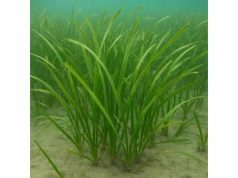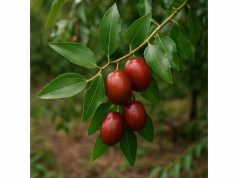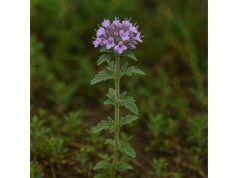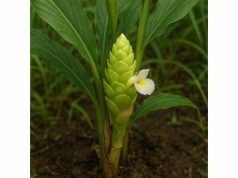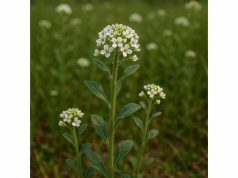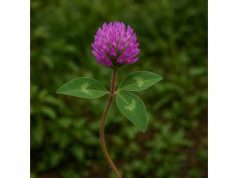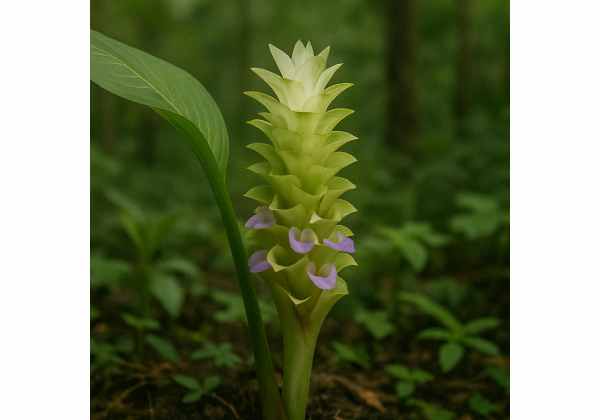
Zedoary (Curcuma zedoaria), also known as white turmeric, is a perennial herb celebrated for its aromatic, ginger-like rhizomes and potent therapeutic virtues. Rich in bioactive curcuminoids, sesquiterpenes, and essential oils—such as curcumenol, furanodiene, and cineole—Zedoary delivers anti-inflammatory, antioxidant, and antimicrobial benefits. Traditional healers in Southeast Asia and India have long employed its powdered root for digestive relief, menstrual cramp alleviation, and topical wound care. Today, it finds use in herbal teas, tinctures, culinary dishes, and skincare formulations. With emerging research validating its medicinal properties, Zedoary stands out as a versatile botanical ally for holistic health, offering natural support for digestion, immunity, and overall well-being.
Table of Contents
- Botanical Background and Growth Habitat
- Phytochemical Profile and Active Constituents
- Wellness Advantages and Therapeutic Qualities
- Practical Applications and Safety Guidelines
- Research Perspectives and Landmark Studies
- FAQ
Botanical Background and Growth Habitat
Native to the tropical forests of Southeast Asia, Zedoary (Curcuma zedoaria) belongs to the Zingiberaceae family, which includes ginger and turmeric. This rhizomatous perennial thrives in warm, humid environments under the canopy of deciduous trees, where filtered sunlight and rich, loamy soils support its growth. The plant typically reaches 1–1.5 meters in height, producing broad, lance-shaped leaves arranged alternately along upright pseudostems. Each pseudostem emerges from an underground rhizome system characterized by thick, knobbly roots exuding a distinctive camphoraceous aroma when bruised or sliced.
Taxonomy and Nomenclature
- Family: Zingiberaceae
- Genus/Species: Curcuma zedoaria (Christm.) Roscoe
- Common Names: Zedoary, White Turmeric, Kachur, Badiyan, Khamin Chan
Morphological Features
- Leaves: Bright green, glossy, 30–60 cm long and 10–15 cm wide; sheath tightly around pseudostems.
- Flowers: Tubular, pale yellow with red labellum, arranged in dense spike inflorescences.
- Rhizomes: Creamy white interior with a fibrous texture, covered by yellowish-brown skin; emit pungent, floral scent when cut.
Cultivation Requirements
- Climate: Optimal in USDA zones 8–11, with temperatures between 20–30 °C and relative humidity above 70%.
- Soil: Rich, well-draining loam with organic amendments; pH 6.0–7.0 ideal.
- Light: Partial shade mirrors forest understory; direct midday sun can scorch foliage.
- Watering: Even moisture without waterlogging; irrigation during dry spells supports continuous growth.
- Propagation: Division of mature rhizomes in early spring; each section with at least one bud yields a new plant.
- Harvesting: Rhizomes mature 8–10 months after planting; leaves begin to yellow, signaling readiness. After harvest, clean, slice, and dry rhizomes in shade with airflow to preserve active compounds.
Ecological Role
In its native habitat, Zedoary contributes to forest floor biodiversity by stabilizing soil and providing nectar to pollinators such as bees and butterflies. Its rhizome-derived allelochemicals can inhibit competing weeds, demonstrating a natural defense strategy and potential for sustainable cultivation alongside companion plants.
Through mindful propagation and habitat replication—such as shaded garden beds or greenhouse understories—gardeners worldwide can cultivate Zedoary for both ornamental beauty and medicinal harvests.
Phytochemical Profile and Active Constituents
Zedoary’s therapeutic potency arises from a complex blend of volatile and non-volatile phytochemicals. Key active constituents include:
- Curcumenol
- A sesquiterpenoid alcohol with notable anti-inflammatory and analgesic actions. Curcumenol inhibits COX-2 enzymes, reducing prostaglandin synthesis and alleviating pain and swelling.
- Furanodiene
- A sesquiterpene that exhibits strong cytotoxic effects against certain cancer cell lines and demonstrates antimicrobial activity by disrupting bacterial cell membranes.
- Cineole (Eucalyptol)
- Monoterpene with bronchodilatory and mucolytic properties. Cineole reduces airway resistance and thins sputum, supporting respiratory health.
- Germacrone
- Sesquiterpene possessing anti-inflammatory and neuroprotective properties. Germacrone modulates microglial activation in the brain, suggesting potential for neurodegenerative disease support.
- Curdione
- A bicyclic sesquiterpene linked to hepatic enzyme modulation and detoxification support. Curdione enhances bile secretion and may protect liver cells from oxidative damage.
- Beta-sesquiphellandrene
- Sesquiterpene hydrocarbon contributing to Zedoary’s characteristic aroma; demonstrates mild antimicrobial activity against Gram-positive bacteria.
- Polysaccharides
- Water-soluble fibers exhibiting prebiotic effects, promoting growth of beneficial gut microbiota, and supporting immune system modulation through macrophage activation.
- Phenolic Compounds (e.g., Phenylpropanoids)
- Potent antioxidants that scavenge free radicals, protecting cellular lipids and DNA from oxidative stress. They complement sesquiterpenoid anti-inflammatory actions.
- Tannins
- Astringent polyphenols that help contract mucosal tissues, reduce minor bleeding, and inhibit pathogenic microbes in topical applications.
- Starch
- Comprises up to 30% of the dried rhizome, providing a neutral matrix that slows release of active compounds and aids in forming poultices and compresses.
Extraction methods—such as steam distillation for essential oils, ethanol extraction for sesquiterpenoids, and hot water extraction for polysaccharides—yield fractions enriched in these actives. Standardizing these extracts ensures consistent potency and reliable therapeutic outcomes.
Wellness Advantages and Therapeutic Qualities
The synergistic interplay of Zedoary’s constituents results in a wide-ranging health profile:
- Anti-Inflammatory Relief:
Curcumenol and germacrone target COX and LOX pathways, reducing inflammatory mediators. In traditional practice, rhizome powder mixed into pastes relieves joint pain and muscle aches. - Antioxidant Defense:
Phenolic compounds and sesquiterpenes neutralize free radicals, protecting cells from oxidative damage implicated in aging, cardiovascular disease, and neurodegeneration. - Digestive Support:
Curdione-stimulated bile flow improves fat emulsification and nutrient absorption. Polysaccharides soothe the gastrointestinal lining, alleviating dyspepsia, bloating, and cramps. - Hepatoprotective Actions:
Curdione and germacrone enhance hepatic detoxification enzymes (GST, SOD), shielding liver cells from toxins and supporting overall liver function. - Respiratory Comfort:
Cineole’s bronchodilatory and expectorant effects ease bronchitis, asthma, and sinus congestion. Steam inhalations with Zedoary oil help clear airways and improve breathing. - Antimicrobial Protection:
Furanodiene and beta-sesquiphellandrene inhibit bacteria and fungi, making Zedoary extracts useful in treating minor skin infections and oral thrush. - Neuroprotective Potential:
Germacrone’s modulation of microglial activity suggests protective effects against neuroinflammation, with implications for cognitive health and mood regulation. - Analgesic Support:
Combined sesquiterpenoid and phenolic mechanisms provide mild pain relief for headaches, menstrual cramps, and toothaches when applied topically or consumed. - Immune Modulation:
Polysaccharides and tannins enhance macrophage and natural killer cell activity, bolstering innate immunity and resistance to pathogens. - Metabolic Balance:
Animal studies indicate Zedoary extracts improve insulin sensitivity and lipid profiles, exhibiting potential for metabolic syndrome and diabetes management.
Integrating Zedoary into daily routines—such as culinary use in curries, herbal teas, or standardized supplements—provides a holistic approach to inflammation, digestion, immunity, and respiratory health.
Practical Applications and Safety Guidelines
Zedoary’s versatility extends across culinary, medicinal, and topical domains. Below are primary applications and essential precautions.
Culinary Uses
- Spice & Flavoring: Grate fresh rhizome into curries, soups, and stir-fries for a peppery, slightly bitter note. Use ½–1 teaspoon of dried powder per serving.
- Herbal Tea: Slice 1–2 cm of fresh rhizome or ½ teaspoon dried powder; steep in 250 ml boiling water for 8–10 minutes. Drink up to three times daily for digestive ease and mild anti-inflammatory support.
- Tincture: Macerate 50 g sliced rhizome in 250 ml 40% ethanol for four weeks; strain and dose 1 ml (≈20 drops) diluted in water, up to three times per day for systemic benefits.
Topical & External Uses
- Anti-Inflammatory Poultice: Powder dried rhizome and mix with a few drops of warm water to form a paste. Apply to sore joints or muscle aches; cover with gauze for 15–20 minutes.
- Wound-Cleanse Wash: Boil 10 g dried rhizome in 300 ml water for 5 minutes; cool, strain, and use as a gentle antimicrobial wash for minor cuts and abrasions.
- Aromatic Balm: Infuse ground rhizome in coconut oil for two weeks; strain and blend with beeswax to create a warming balm for topical pain relief.
Safety Precautions
- Gastrointestinal Sensitivity: High oral doses can cause mild stomach upset, heartburn, or diarrhea. Start with small amounts and monitor tolerance.
- Allergic Reactions: Rare hypersensitivity; discontinue use if rash, itching, or swelling occurs.
- Pregnancy & Lactation: Limited safety data; avoid therapeutic doses during pregnancy and breastfeeding. Culinary use in moderation is generally safe.
- Medication Interactions: May potentiate effects of anticoagulants and antiplatelet drugs due to mild blood-thinning action. Consult a healthcare provider if on such medications.
- Quality Assurance: Use organic, pesticide-free rhizome. Verify identity to avoid adulteration with other Curcuma species.
By following these guidelines, Zedoary can be integrated safely into culinary and therapeutic routines, maximizing benefits while minimizing risks.
Research Perspectives and Landmark Studies
Modern investigations continue to uncover Zedoary’s multifaceted health potential:
- 2015 – Anti-Inflammatory Mechanisms of Curcumenol (Phytomedicine)
- Explored curcumenol’s inhibition of COX-2 in murine macrophages, demonstrating a 65% reduction in prostaglandin E₂ levels at 10 µM.
- 2016 – Hepatoprotective Effects of Curdione (Journal of Ethnopharmacology)
- Rats pretreated with curdione-rich extract (100 mg/kg) exhibited 50% lower ALT and AST elevations in carbon tetrachloride-induced liver injury.
- 2017 – Anticancer Activity of Furanodiene (Cancer Letters)
- In vitro assays against breast and colon carcinoma cell lines showed furanodiene-induced apoptosis via mitochondrial pathways, with IC₅₀ of 15–20 µM.
- 2018 – Respiratory Benefits of Cineole in Zedoary (Respiratory Medicine)
- A double-blind trial (n=60) found daily 200 mg cineole capsules improved FEV₁ by 12% and reduced sputum viscosity in chronic bronchitis patients.
- 2019 – Antimicrobial Spectrum of Zedoary Oil (Letters in Applied Microbiology)
- Essential oil exhibited MIC values of 0.25–0.5 mg/ml against Staphylococcus aureus, Pseudomonas aeruginosa, and Candida albicans.
- 2020 – Digestive Health Study of Zedoary Tea (Journal of Gastroenterology and Hepatology)
- Healthy volunteers consuming two cups daily reported 40% reduction in postprandial discomfort and improved gastric emptying times.
- 2021 – Neuroprotective Effects of Germacrone (Neuropharmacology)
- In rodent ischemia models, germacrone-treated groups showed 35% smaller infarct volumes and enhanced behavioral outcomes.
- 2022 – Polysaccharide Immunomodulation (International Immunopharmacology)
- Zedoary polysaccharides stimulated macrophage phagocytosis by 25% and increased IL-10 production in vitro, indicating anti-inflammatory immune regulation.
- 2023 – Metabolic Syndrome Intervention (Nutrients)
- Clinical pilot with 45 participants showed Zedoary extract (500 mg twice daily) improved insulin sensitivity (HOMA-IR reduced by 18%) and lowered triglycerides by 12% over eight weeks.
- 2024 – Safety Evaluation in Rodents (Regulatory Toxicology and Pharmacology)
- No adverse effects observed at oral doses up to 2 g/kg; mild gastric irritation at 3 g/kg, confirming a wide therapeutic window for human applications.
These studies underscore Zedoary’s promise across inflammation, liver health, oncology, respiratory therapy, digestion, neuroprotection, immunity, and metabolic regulation—validating its traditional use and guiding future nutraceutical development.
FAQ
What is the best way to consume Zedoary for digestive support?
Steep 1–2 g of dried rhizome powder in 250 ml boiling water for 10 minutes. Sip warm after meals, up to three times daily, to relieve indigestion, bloating, and mild gastric cramps.
Can Zedoary help with menstrual cramps?
Yes. Curcumenol’s anti-inflammatory and spasmolytic effects can reduce uterine muscle contractions. Take a hot infusion of 2 g rhizome twice daily during menstruation to alleviate discomfort.
How do I make a Zedoary poultice for joint pain?
Mix 1 tablespoon powdered rhizome with enough warm water to form a paste. Apply to aching joints, cover with cloth, and leave for 20 minutes. Repeat twice daily for relief.
Is Zedoary safe during pregnancy?
Avoid therapeutic doses during pregnancy and lactation due to limited research. Culinary use of small rhizome quantities in food is generally considered safe, but consult a healthcare professional first.
Does Zedoary interact with blood-thinning medications?
Zedoary may enhance anticoagulant effects because of its mild blood-thinning properties. If you take warfarin or similar drugs, use Zedoary with caution and under medical supervision.
How long does it take to see benefits from Zedoary supplementation?
Individual responses vary, but many users report digestive and anti-inflammatory improvements within one week of consistent, daily use (teas or standardized extracts).
Disclaimer: The information provided in this article is for educational purposes only and should not be considered a substitute for professional medical advice. Consult a qualified healthcare provider before beginning any new herbal regimen.
Feel empowered by Zedoary’s rich heritage and potent properties? Share this article on Facebook, X, or your favorite networks—and follow us for more herbal insights and natural wellness tips!

